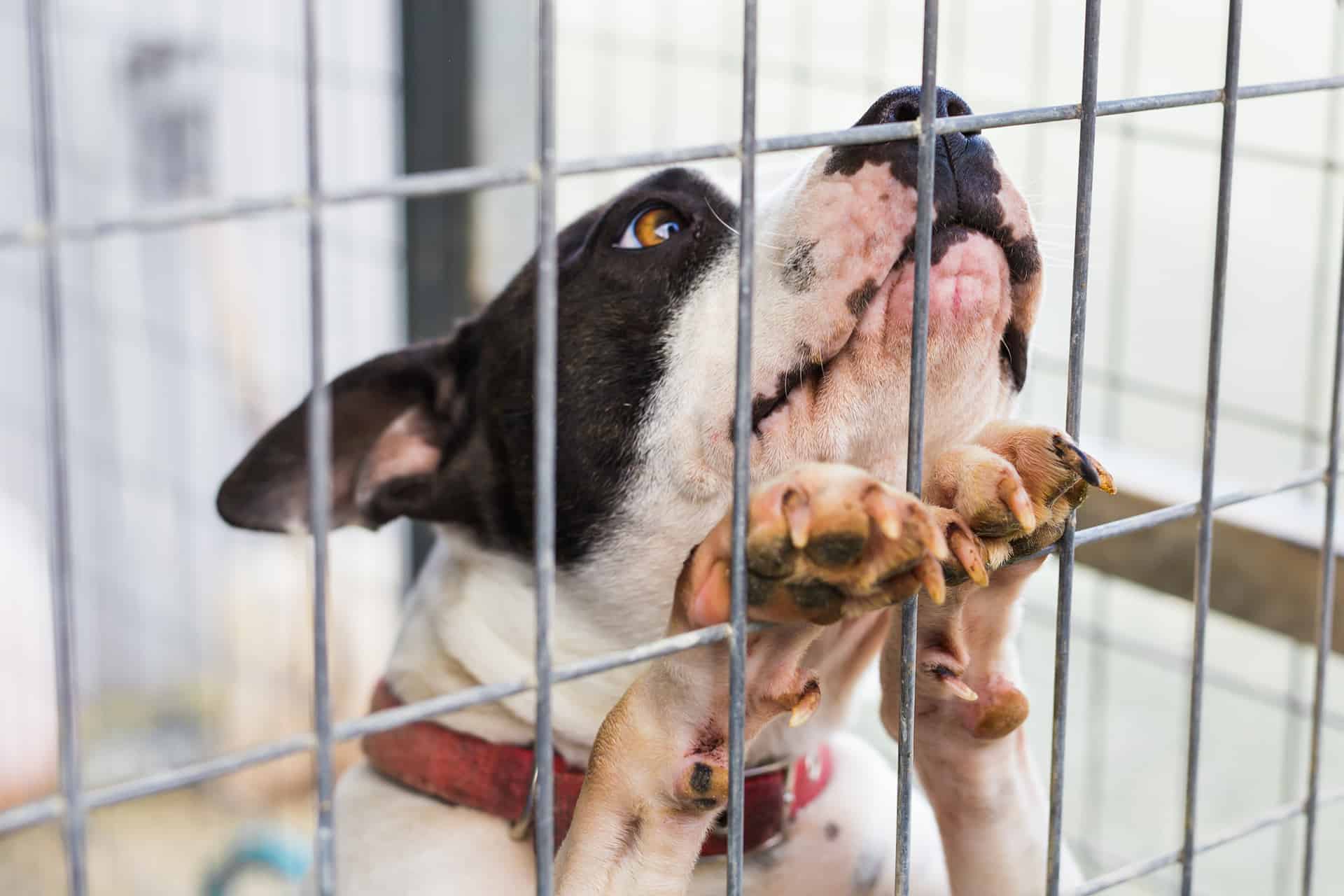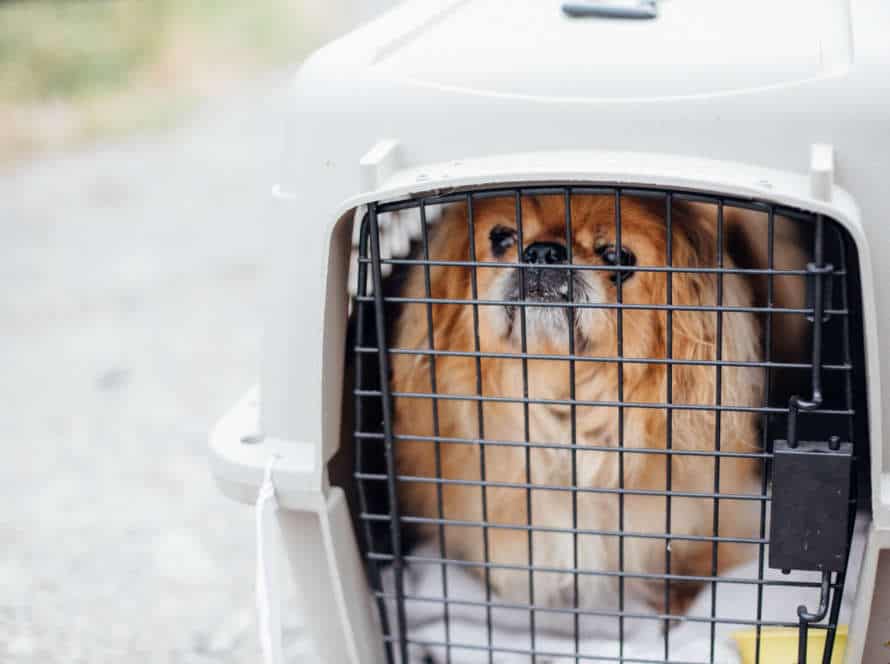Addressing Nighttime Whining: Encouraging Quiet in the Crate
Dog owners may find nighttime whining in a crate a common issue. But there are some tips to aid your furry friend to snooze peacefully in the crate.
- Make sure the crate is cozy and pleasant with blankets or bedding.
- Gradually increase the time your pup spends in the crate during the day, and reward them with treats and compliments when they’re calm.
- Do not respond to nighttime whining, as this could stimulate more vocalizations.
- Attempt using white noise like a fan or calming music to soothe your pup and shut out outside sounds.
- Take into account using an Adaptil diffuser, which emits calming pheromones to assist your dog to relax.
With dedication and positive reinforcement, you can teach your dog to sleep quietly in their crate at night.
Understanding Nighttime Whining in Crates
A new pet in the home can be hard to adjust to, especially if they’re crate trained. One issue pet owners come across often is whining in the crate during the night. To figure out how to deal with this, it’s important to find out why your pet is whining. Here’s an explanation of why this might happen and the best ways to make sure they stay quiet in the crate.
Why do dogs whine in their crates at night?
Dogs may whine in their crates at night for many reasons. It is important to identify the cause first. Here’re some potential causes:
- Anxiety – Being in a crate can cause anxiety in some dogs, particularly if they’re not used to it. This can cause whining, barking and pacing.
- Attention-seeking – If a pup learns whining will get them attention from the owner, they may keep doing it.
- Potty needs – Dogs may whine if they need to go outside to pee or poo.
- Hunger – Some dogs may whine if they’re hungry or thirsty.
- Pain/discomfort – If a dog is in pain or uncomfortable, they may whine to communicate the issue.
Once the cause is identified, there are ways to address it and help the dog stay quiet in the crate at night. Comfy and familiar environment, avoiding attention-seeking behavior, regular bathroom breaks and advice from a vet/trainer should help. It is important to be patient and consistent when dealing with this issue.
Consequences of unaddressed nighttime whining
Nighttime whining in a crate, if left unaddressed, can have serious consequences.
It can lead to sleep deprivation and fatigue for the pet owner. This may cause irritability and difficulty to focus on daily activities.
It can also cause anxiety and stress for the dog. This can lead to other behavioral issues such as aggression and destructiveness.
Ignoring the whining may only reinforce the behavior, leading to louder whining in the future.
It is important to address the nighttime whining by setting up a routine. Create a peaceful sleeping environment for your dog.
Encourage quiet behaviour in the crate through positive reinforcement techniques. Reward quietness and ignore whining.
Methods to address nighttime whining
It’s a must to figure out why your pup is whining at night in their crate before tackling the behavior. The reasons could be anything from distress and uneasiness to lack of training and entertainment. So, each needs a different strategy to fix it.
Here are some tips to tackle nighttime whining:
- Ensure your pup has enough exercise and playtime before going to bed.
- Give your pet a cozy sleeping atmosphere with a suitable bed and toys.
- Slowly introduce your pup to the crate. Start with short sessions and gradually lengthen the duration of confinement.
- Ignore the whining. Don’t give your pup attention until they stop. But, don’t wait too long and let your pup soil themselves.
- Think about crate training with an expert trainer. They can help you create a successful training plan that works for you and your four-legged pal.
As you get to the core of the matter, patience and coherence will be essential to address your pup’s nighttime whining. When your pooch feels safe and comfy in their crate, they’ll be able to sleep through the night.
Training the Dog to Be Quiet in the Crate
Training a pup to be tranquil in the crate may look intimidating, however, with endurance and reliability it is doable to reward peacefulness in the box. Constructing a pleasant atmosphere and praising tranquility is essential to shape your furry friend to be serene in the crate.
Let us go over the top techniques for achieving this:
Positive reinforcement
Positive reinforcement can be a great way to teach your canine to be silent in the crate. Here are some techniques to help:
- Reward quietness: Give treats, toys, or praise when your pup is quiet in the crate.
- Create positive associations: Make the crate comfy and cozy with blankets and toys – this helps your pup view the crate as a positive and safe space.
- Practice during the day: Set up short training sessions during the day. This helps your dog get used to the crate without experiencing nighttime confinement.
- Stick to a routine: Feed, walk, and bathroom breaks should follow a consistent pattern. This will help your pup adjust to the crate and feel at ease.
With patience and consistency, positive reinforcement can help train your dog to be quiet and comfortable in the crate at night.
Reward training for quiet crate behavior
Reward train your pup to be quiet in the crate! Here’s how:
- Place your dog in the crate and give them a treat.
- Say “quiet” in a firm, but calm voice when they start to whine or bark.
- When they’re quiet again, give them a treat and praise.
- Do this again and again, waiting longer each time before giving the reward.
- Be consistent with the same command and reward pup every time they’re quiet in the crate.
- With time, patience, and consistency, they’ll learn quiet behavior is rewarded.
Pro tip: Make the crate comfy and inviting with bedding and toys. And, create positive experiences with the crate outside of training.
Crate games and other training techniques to reinforce quietness in the crate
Training your dog to be quiet in their crate can be difficult, but using crate games and other techniques can help!
Crate Games: Place treats in the crate and let your pup explore. Close the door for short periods as they get used to it.
Gradual Crate Training: Introduce your pup to the crate during the day and use treats to encourage them.
White Noise: Block out distracting noises with white noise like a fan or calming music.
Be patient, consistent, and positive with your pup – they’ll learn to be quiet in their crate soon!
Enhancing the Environment for Comfort and Safety
Give your pet a calm atmosphere to sleep! To reduce whining and barking, get the perfect crate. Include plenty of toys, blankets, and other things that make them feel safe. Provide what they need throughout the day. This will reduce their anxiety and make them feel more secure. Let’s learn how to make a safe and cozy environment for your furry friend!
Choosing the right crate size
Choosing the right size of crate is vital for your dog’s comfort and safety. Too small, and they’ll feel confined and anxious. Too big, and accidents or sleeping in the wrong areas could happen. Here’s how to pick the correct crate size:
- Measure your pup – nose to tail, and ground to head.
- Get a crate that’s at least 4-6 inches bigger than the measurements.
- Make sure it’s large enough for them to stand, turn, stretch and lie down comfortably.
- Small and medium breeds need smaller crates. Large ones need larger ones.
Comforts in the crate
Dogs can be taught to sleep in their crates without whining or crying. Enhance the environment to make it cozy and safe. Here are some tips:
- Add comfy bedding – use soft blankets or a dog bed.
- Create a tranquil atmosphere – place the crate in a peaceful area and reduce outside noise.
- Give toys and chews – provide toys or chews to keep pup entertained while away.
- Provide exercise and stimulation – ensure pup gets lots of exercise and mental stimulation during the day.
It’s essential to be patient and consistent when crate training. With practice, pup will learn to love their crate and sleep peacefully.
Distractions to keep the dog occupied during crate time
Distractions can be great for keeping your pup relaxed and content in their crate. Here are a few good options:
- Peanut butter – A spoon of this tasty treat will keep them occupied for a while.
- Stuffed toys – Kongs and puzzle toys with hidden goodies make great occupiers.
- Calming music – Play soothing tunes or white noise to help chill your dog out.
- Bone or chew – A bone or chew toy will keep their mind busy.
Remember though – these distractions should only be used occasionally and never as a form of punishment.
Addressing Underlying Behavioral Issues
At night, if your pup whines or barks, it may be a sign of something deeper. This could be from being lonely, bored, or simply not getting enough exercise. To fix this, we need to figure out the root cause before helping them stay quiet. So, let’s identify and correct the problem!
Separation anxiety
Separation anxiety in canines might show up in many ways, like too much barking, chewing, and destruction. Nighttime whining is a common symptom of anxiety, causing distress to both doggo and owner. To quiet the pup in the crate, here are some tips:
- Place a comfy bed plus a few toys in the crate to make it a pleasant place.
- Practice leaving the pup in the crate for short periods of time when you’re in the house, encouraging the pooch to stay quiet.
- Don’t acknowledge the whining in these practices. Reward only when pup’s quiet.
- Once pup’s more comfy in crate, practice leaving the house for longer periods, gradually increasing the duration.
- Be patient and consistent, giving positive reinforcement when pup behaves well and ignoring bad behavior.
- With practice, your dog can learn to feel secure when alone.
Pro tip: Never punish pup for anxiety or nighttime whining; it can make the behavior worse.
Fear and stress
Dog owners often face nighttime whining in the crate, due to fear and stress that their pets experience in new environments. Here’s how to address it:
- Encourage your pup to link their crate with good stuff, like treats and toys.
- Start short and gradually increase the amount of time your pup spends in the crate, even overnight.
- Put the crate in a quiet and comfortable spot, far from distractions.
- White noise or calming music helps ease anxiety.
- Don’t pay attention to whining – this just reinforces it.
- Get a bigger crate or add comfort items, like blankets or chew toys, to make your pup more relaxed.
- Patience and consistency helps your pup overcome nighttime whining and feel more at ease in their crate.
Aggression and other behavioral issues that cause nighttime whining.
Dogs may whine during nighttime due to several things, like aggression and behavior problems. To deal with this, here are some tips:
- Figure out why it’s happening. It could be because of separation anxiety, not enough exercise, or a health problem. Talk to a vet to make sure there isn’t an illness.
- Use rewards for good behavior. Give treats or praise when they’re calm and quiet.
- Give them a comfy place. Get a bed, toys, and a blanket to help them feel safe.
- Stick to a routine. Have meals and exercises at the same time every day. This will help them understand what they should do.
By sorting out behavior issues, you can help your dog stop nighttime whining and have a healthier life. Remember: Consistency is important when dealing with behavior. Hang in there – results may take some time.
Frequently Asked Questions
1. Q: Why is my dog whining at night in his crate?
A: Dogs may whine at night in their crate due to anxiety, discomfort, or a need to be let out to go to the bathroom.
2. Q: Should I let my dog out of his crate when he whines at night?
A: It’s important to address the reason for the whining before letting your dog out of the crate. If he needs to go to the bathroom, it’s okay to let him out. However, if he is whining due to anxiety, letting him out may reinforce the behavior and make it worse.
3. Q: How can I encourage my dog to be quiet in his crate at night?
A: You can try providing comforting items, like a blanket or toy, in the crate. You can also try covering the crate with a blanket to make it feel more den-like. Gradually increasing crate time during the day and ensuring your dog gets enough exercise can also help reduce nighttime whining.
4. Q: What if my dog continues to whine at night?
A: If your dog continues to whine at night, it may be helpful to consult with a professional trainer or behaviorist. They can provide guidance and help address specific behavioral issues.
5. Q: Is it okay to give my dog medication to help with nighttime whining?
A: It’s important to consult with your veterinarian before giving your dog any medication. There may be alternative solutions that can address the underlying cause of the whining without the need for medication.
6. Q: Is it mean to crate my dog at night?
A: Crating can be a safe and comfortable environment for dogs when used appropriately. It’s important to introduce the crate gradually and make it a positive and comfortable space for your dog. Crating also helps prevent destructive behavior and promotes a regular sleep schedule.







